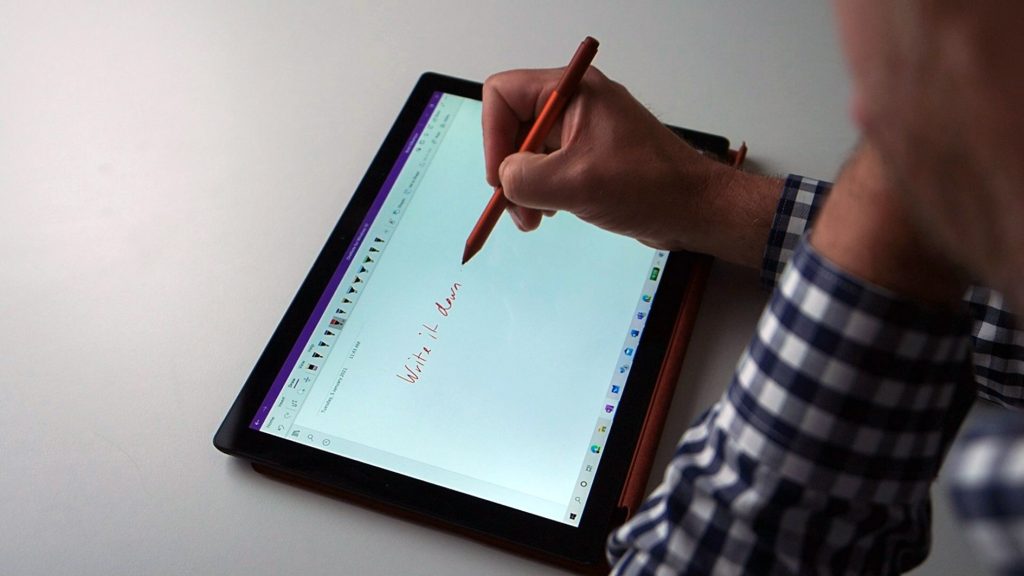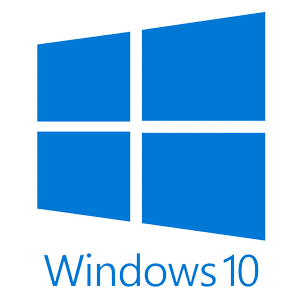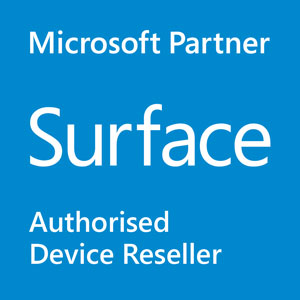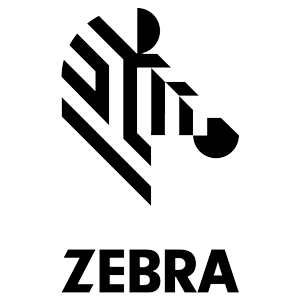There are numerous scientific studies out there on why pen is better for your brain. So I have put together some of the most influential studies that have shaped my approach to learning. This is an introductory blog to a mini series of scientific based blog posts to come. Before I break down the evidence, let me take you on my journey.
I’ve been using a digital pen for nearly 20 years now. When I first saw a computer that came with a digital pen, I was instantly sold. It made so much sense to me. And now, 20 years later, having a device with a pen makes even more sense.
How I used pen and paper
I was always a little bit disorganized with pen and paper. I had a collection of different notebooks, loose leaf sheets with meeting notes written on them, and a disorganized soup of paperwork. If you ever opened up my bag you would find a fair stash of paper. And if one of those pieces of paper flew out my car window as I drove down the road… well it wouldn’t have been the first time.
So when I saw one of these computers with a pen on it, I thought “I have to have this!” I wanted to be able to take notes just like I would on paper, but on a digital screen instead. To have all of those notes in one location, instead of all over the place, made a lot of sense to me. And I instantly knew that unlike a paper notebook this digital notebook had virtually limitless storage.
Going Digital
So I battled away at converting my paper based processes into the digital world for about 15 years before I understood why it made so much sense to me.
Over those initial 15 years, from 2001 to 2015, I had progressively eliminated more and more paper from my life. I initially took notes on my first tablet computer – the Compaq TC-1000 – in a program called Microsoft Journal. Fortunately I didn’t stick with Journal too long, because it’s now well and truly gone. But I did discovered Microsoft OneNote to use instead. And so for the last 17 years I’ve been using OneNote as my digital notepad. I still have notes in my personal notebook that go back to 2003.

I have nothing against paper. In fact, I think it’s because I inherently understood the value of taking notes with pen and paper, that I was drawn to a computer with a pen in the first place. I wanted the benefits of using pen and paper, but I wanted them on a digital device.
Finding Travis Smith
2015 was a turning point for me because I met a fellow Melburnian named Travis Smith. Travis is a former Teacher and Assistant Principal at a local school who also has a psychology degree. These days Travis works for Microsoft Australia in their Education Team.

I saw Travis give a presentation to an education forum in 2015 about the science behind the Surface pen. It was an incredible presentation that introduced me to a lot of research, scientists and studies that I’m going to reference in this short series.
Travis still gives a version of that presentation today, he delivers the entire presentation from OneNote via his Surface Pro. Fortunately Travis’ presentation has been recorded and it’s here on YouTube on the Microsoft Australia YouTube channel. It’s about a 35 minute presentation, and I highly recommend watching it. Especially if you work in education, or if you’re a parent of school age children.
What I Learnt From Travis
I was blown away by Travis’ presentation because he brought together the scientific research that explained my intuition. That writing with a pen is very different to typing. I always knew that typing notes on a laptop in front of a client or at a meeting was very impersonal. It closes you off from the person opposite, and it sets up an air of secrecy. But there is far more to writing notes in those situations than being open and transparent.
What I learned from Travis is that writing with a pen is a visual and spatial activity that improves your memory and enhances your mental processing. And he explained why!
So I introduced myself to Travis after that presentation and we had a discussion about whether the research that he referenced, which is predominantly focused on education, has any application for me, as a trainer working with business and government customers. So we got together and Travis helped me to create a presentation that I still used today.
The Science Behind the Pen

I am not an academic, but I have since focused a lot of attention to the field of Human Computer Interface (HCI) and I’ve done a lot of reading on the subject.
So in each article in this series, I’ll share some of what I’ve learned with you. In each blog post, we’ll introduce one Academic team and discuss their research in brief. And we’ll look at if, and how, it applies to digital pen and paper.
We’ll take a look at the work of; Professor Gordon Sanson, a biologist from Monash University here in Melbourne; Pam Mueller from Princeton (and the TV game show Jeopardy); Professor Sharon Oviatt from Oregon in the US; and Professors Van Der Meer and Van Der Weel from Norway.
You Need a Digital Pen
If you read our blog, or watch videos on our YouTube channel, you’ll know that I’m a huge advocate of two-in-one devices like the Surface Pro. I’ve said a number of times that if the device doesn’t have a digital pen it belongs in the 90s.

And even though devices with pens have now become far more mainstream, many people get defensive at deliberately provocative statements like that. Understandable. But I want to use this series to explain to you why I say that and what I mean by it.
It’s not that I don’t believe in keyboards. Far from it, a keyboard is what I use most of the time. But what I know from this research, and you’ll soon see, is that more than a keyboard is required for you to achieve your best both personally and with your team.
The pen is a thinking tool. It is a tool of attention and focus. It can (and should!) be used to refine processes, to develop ideas, and to solve problems. This series will explain why pens are superior for organizing thoughts, gathering input, outlining and taking notes. And once you are convinced of the need for a digital pen, we’ll follow up with articles and videos showing how to take advantage of the pen on your Surface.






